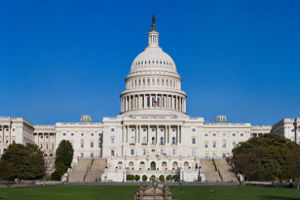While Congress bickered and ultimately did nothing between January and March, nonprofits worked to educate their constituents on the potentially apocalyptic effects of the automatic spending cuts known as the sequester. They urged supporters to contact their legislators and demand they stop the cuts.
The work was for naught. The sequester is here.
“How sequestration will affect individual organizations and individuals and families is not entirely known. But, we project $30 billion in cuts across human service programs and another $11 billion cut from Medicare,” said Irv Katz, president and CEO of the National Human Services Assembly (NHSA) in Washington, D.C.
The sequestration, originally slated to go into effect at the beginning of the year, was delayed until today. Nonprofit officials were surprised and dismayed that lawmakers could not reach a deal to avoid it. “We certainly thought Congress would realize what was at stake here,” said AnnMaura Connolly, president of Voices for National Service in Washington, D.C. “We’ve been trying to help educate people about what’s at stake and how to translate that into what’s being lost at a local level. It has very real implications for local communities, in most cases the poorest.”
The sequestration cuts will amount to about $1.2 trillion from defense and domestic spending during the next 10 years, including about $85 billion from this fiscal year’s budget. Sequestration was set in motion in 2011, when the Joint Congressional Committee on Deficit Reduction did not reach an agreement on deficit cuts. The sequester was intended to be so burdensome that lawmakers would have no choice but to make a deal to avert it.
According to the federal Office of Management and Budget (OMB), nondefense programs will suffer 5 percent reductions in funding. Many of these are programs that the government has looked to nonprofits to administer, such as Meals on Wheels and Head Start. The OMB detailed a sampling of sequester effects in a February statement, including:
* Head Start would serve 70,000 fewer children;
* Meals on Wheels would serve 4 million fewer meals;
* An estimated 100,000 homeless people would lose their housing and emergency shelter programs;
* Rental assistance would “face a significant reduction in funding,” affecting about 125,000 low-income families;
* Cuts to the Mental Health Block Grant program would put about 373,000 mentally ill adults and children at risk;
* The Special Supplemental Nutrition Program for Women, Infants, and Children (WIC) would serve about 600,000 fewer women and children; and,
* About 424,000 fewer HIV tests could be administered by Centers for Disease Control grantee facilities.
Diana Aviv, president and CEO of Independent Sector in Washington, D.C., estimated via a statement some of the impact to be even greater: 96,000 fewer children in Head Start and 19 million fewer meals served by Meals on Wheels. “It is imperative that lawmakers and the Administration end the sequester immediately, before its impact is fully felt,” she wrote in the statement. “These mandatory, across-the-board spending cuts violate the basic values of justice, fairness, and effectiveness by exacerbating income inequality, increasing poverty, and jeopardizing programs that provide vital support to the nation’s most vulnerable populations.”
The nonprofit sector receives approximately 32 percent of its total funding from government grants, said Tim Delaney, president and CEO of the National Council on Nonprofits in Washington, D.C. ”States are afraid to enter into contracts because they’re afraid they won’t be able to pay them. If you are a nonprofit with a government contract, you’re going to be losing that revenue.”
In addition to contract revenue drying up for nonprofits, Delaney estimated that about 700,000 Americans will lose their jobs, and another 800,000 government employees will be forced to take an unpaid furlough day each week. These 1.5 million people might haveto turn to the nonprofit sector to meet needs they no longer can with their diminished or nonexistent paychecks. “When they can’t provide for it themselves, that means they’re going to have to turn to nonprofits, and our burdens are going to start skyrocketing,” said Delaney.
Not only might those 1.5 million seek services, they will be less able to make charitable contribution, said Delaney. “We’ll have less revenue to deal with higher demands for service,” he said. “We’re being asked to do so much more for so many more for so much longer, for so much less.”
Maj. Ron Busroe, national secretary for community relations and development for the Salvation Army, headquartered in Alexandria, Va., expects a large increase in demand for services. He said there’s no way to tell just how many more people will go to the Salvation Army because “when it comes to rendering services, that’s driven very much locally.”
People who work for companies that rely on government contracts, as well as furloughed government workers, will be most affected by sequestration, he said. “If people are going to have to cut back 20 percent of their time, they’ll lose 20 percent of their income, and a lot of people in this country live paycheck-to-paycheck. I anticipate there’s going to be a good number of people who come to us for emergency financial assistance,” said Busroe.
Connolly thinks the sequester will result in about 4,200 AmeriCorps spots being cut “at a time when demand for opportunities to serve are at record numbers and when organizations like City Year are experiencing demand from schools that want to bring corps members in,” said Connolly. Grant announcements will be delayed further, she said. “Schools are going back into session in August and we already don’t hear about grants until June. It’s potentially devastating, and it’s on top of the cuts that have been happening the last few years,” said Connolly.
NHSA has been trying to educate people around the country about the effects of sequestration, but Policy Director Hayling Price said they’ve had to battle messaging fatigue. “The challenge in getting grassroots to dial in on this is, if they get another call from D.C., what point does it hit home for them?” he said. “They’ve been hearing this for months, and I’m not sure there’s a tangible sense of how devastating this will be.”
Delaney agreed saying, “What people fail to realize is how much federal money flows out through the states and localities to deliver services that appear to come from the state or local governments but are actually federal. We’ve been trying to alert people as to the consequences.”
To that end, NHSA created a tool called sparkaction.org to educate the public. Entering a ZIP code will identify that district’s senators and congressmen and will provide a template for a letter, complete with talking points, urging the lawmakers to stop sequestration.
Nonprofits might have more bad news in addition to the sequester. Jack Lew, the recently confirmed U.S. Secretary of the Treasury, told the Senate Finance Committee that President Barack Obama has once again included in his budget proposal a 28-percent cap on itemized charitable deductions for high-income individuals as another way to reduce the federal deficit. Research has shown that a 28-percent cap could translate to an estimated loss of as much as $5.6 billion in charitable donations for one year.
There is another chance to stop the sequester. On March 27, the continuing resolution (CR) that allows the government to operate in lieu of a budget will expire. Price believes sequestration talks might happen in conjunction with talks to extend the CR. “Having the second milestone date of March 27 keeps Damocles’ Sword over our head,” he said. “We’re hoping that whatever last ditch advocacy we’re putting together will roll into the next phase.”
What is clear is that the sequester is here, at least for the moment. That means nonprofits will have to prepare to meet even greater needs with even less money. “As we understand it, government agencies are now working on how the cuts will play out,” said Katz. “That leaves families and organizations affected out in the cold, perhaps literally.”











